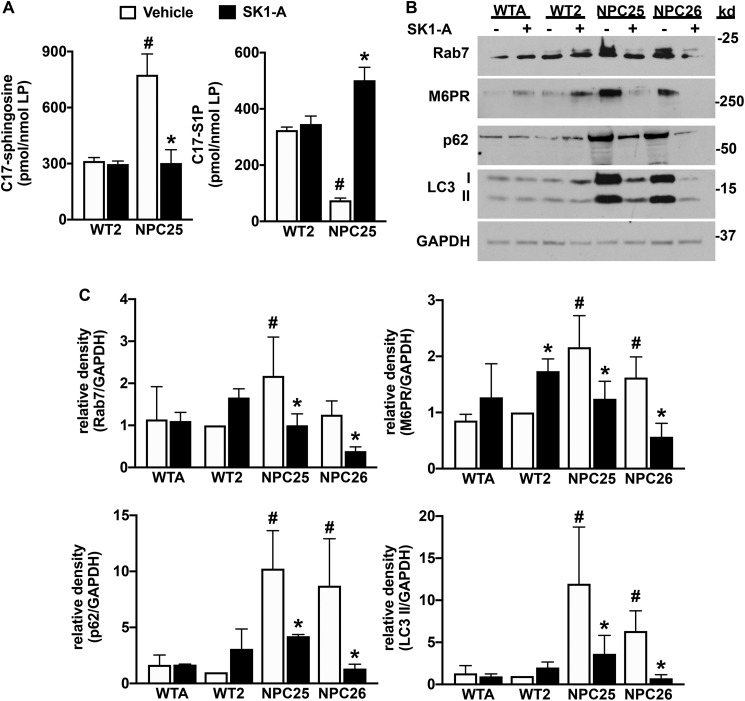Figure 3.
SK1-A increases sphingosine kinase activity and suppresses autophagic defects in NPC1 mutant fibroblasts. A, normal human fibroblasts (WT2) and NPC1 mutant fibroblasts (NPC25) were treated without or with SK1-A for 2 h and then incubated for 30 min with C17-sphingosine. Cellular levels of C17-sphingosine and C17-S1P were measured by LC-ESI-MS/MS. Data are representative of at least three independent experiments, normalized to total lipid phosphate, and presented as mean ± S.D. of three biological replicates (n = 3). #, p < 0.05 compared with WT2 vehicle; *, p < 0.05 compared with vehicle-treated NPC25 cells. Data were analyzed by two-way ANOVA with Tukey's post hoc test. B, normal human fibroblasts (WTA, WT2) and NPC1 mutant fibroblasts (NPC25, NPC26) were cultured for 2 h in the absence of serum and then treated without or with SK1-A (2 μm) for 3 h. Cell lysate proteins were immunoblotted with anti-M6PR, anti-Rab7, anti-p62, or anti-LC3 antibodies. Blots were stripped and reprobed with anti-GAPDH as a loading control. Images are representative of three independent experiments. C, relative density of the indicated immunopositive bands normalized to GAPDH. Data are mean ± S.D. (error bars) of three biological replicates. #, p < 0.05 compared with WT2 vehicle; *, p < 0.05 compared with vehicle-treated NPC1 mutant fibroblasts. p values were determined by two-way ANOVA with Fisher's LSD.

